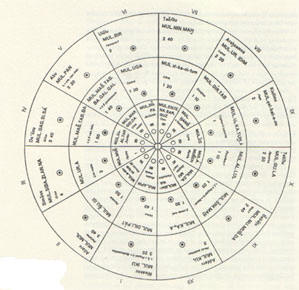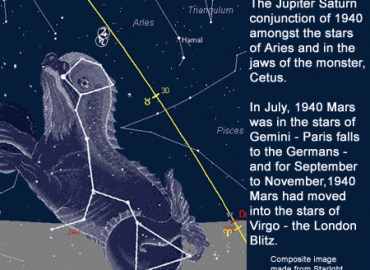Bernadette Brady
Nov 2005
One of the ways that we mark events in our culture is not only in their calendar dates but also in their location. To us, place and date are interwoven. We raise monuments at these places and hold ceremonies at these monuments on the calendar dates of the events enshrined in that time and place – the anniversary. Our culture and our national identities are perpetuated by the recognition and celebration of these relationships between time and a particular place.
An example of this in the USA is the events of 9/11, now enshrined in New York City. For Australians, one of these is the cold and windswept cliffs of Gallipoli and the date 25th April, while a British example is the commemoration of the 200th anniversary of the Battle of Trafalgar in October of this year (2005) at Gibraltar. So strong is this desire that we even locate our mythic figures and events in physical places, such as Father Christmas or Santa Claus in Lapland; and television commercials for Easter products would have us believe that the Easter Bunny lives in Chocolate Land. We instinctively link dates to places.
But our version of astrology is focused on time rather than place and does not really provide us with a tool to explore the potential of a place to produce an event, to explore the inherent quality of a location. Granted we do have the technique of AstroCartoGraphy but this method views the earth as a neutral canvas, blank and empty, waiting for a planetary line to impregnate it. Yet the earth is not a neutral canvas.
Our experience is that places and regions do have an inherent quality, some of which may come from its history and some of which may well come from the actual spirit of a place. However, some of the inherent quality of a location, I believe, comes from a location’s relationship with the sky, the whole sky. For the stars, unlike the wandering planets, do not change their relationship to each other, nor, if we ignore precession, do they change the actual place in which they rise or set on the line of the horizon and they will always rise before dawn for the same calendar date from one year to the next.
The stars are fixed and regular and you can set your calendar by them which was exactly what the Babylonians did. By 1100 B.C.E. the Babylonians were using a simple instrument called an astrolabe but which was actually a type of parapegma or star calendar.
This instrument listed the stars in the different parts of the sky. These were Ea (south of the ecliptic and the outer ring of the instrument), Anu, (the ecliptic zone, middle ring) and Enlil (north of the ecliptic the inner ring) which would rise before dawn for each of the twelve Babylonian months. By making their instruments circular they could also see what stars would be setting or, more importantly as it was easier to see, what stars were culminating at dawn for any given month.
The culminating stars were called the ziqpu-stars and the emphasis on observing and recording the ziqpu-stars may well have been the origin of the M.C. in horoscopic astrology.

But such instruments were only useful for the latitudes for which they were made, for if we observe the sky for different latitudes, then different sets of stars would be rising at the key times of the year.
And this is the major point. Depending on the latitude, there will be a particular pattern of stars which claim rulership (I prefer the term ‘governorship’ when talking of stars), over a period of time for a particular place. For any given latitude a star may govern a period of just a few days or perhaps a few weeks. It will then give way to another star of different mythological meaning and different symbolism which will take over the governorship, and then that star will give way to another, and so on, throughout the calendrical year, only for the whole cycle to repeat itself in its timing and its order from one calendrical year to the next.
The Pulse of New York
If we consider New York City, we can construct a modern parapegma to observe the city’s rhythm, its unfolding annual star-pattern. The following is such a parapegma using only the heliacal rising stars for New York’s latitude.
[Starlight Users Note: A parapegma for any latitude and time period can be constructed by using Tools/Parapegma from the main page].
| Date | Star – Heliacal Rising | Quality of the time period |
| January 3 | Acumen – the sting of the Scorpion | Scandal and rumors run through the city. |
| February 13 | Rukbat, the foot of the archer | Steadiness, a time of no change – the strength of a city to maintain its daily rhythm. |
| February 17 | Deneb Algedi – the tail of Capricorn | A time of the Establishment and the law. |
| April 13 | Fomalhaut – One of the Royal Stars | Idealism, illusion, and even deception, abound – parades, parties, concerts. |
| May 6 | Al Rescha – the star that joins the fishes of Pisces | A time where ideas or people come together – conferences, exhibitions or new ideas. |
| May 24 | Menkar – in the mouth of the sea monster | The emergence or revealing of hidden issues |
| June 7 | Aldebaran – the red eye of the bull – a Royal star | Seeking the noble solution, honoring the noble individual. |
| June 11 | Ankaa – the phoenix | A time of recovery, to rise up from the ashes, to rebuild. |
| June 29 | Bellatrix – the left shoulder of Orion | A time of encountering the shadow or taking the harder pathway. |
| July 5 | Betelgeuse – the right shoulder of Orion | A period of optimism, a time of success. |
| July 7 | Alnilam & Alhena – The belt of Orion and the foot of Gemini | Bringing different ideas and people together where they can be inspired by a mission or cause. |
| July 8 | Rigel – the foot of Orion | The government releases new policies, to act with authority. |
| July 28 | Procyon – the bight star before Sirius | Explosions or eruptions, the sky is lit up with celebrations or city fires. |
| July 30 | Murzim – the little dog | An announcement, a proclamation or a protest march. |
| August 2 | Sirius – the brightest star in the sky | The potential for an historic event. |
| August 9 | Acubens – the star of Cancer | Questions and issues around the sacredness of life, the role of the family. |
| August 29 | Alphard – the heart of the Serpent | Emotional upheavals and/or distress, criminal activity from a repressed group. |
| September 24 | Alkes – the cup | A cup, a chalice, a vessel, be it a person or an object, is important. A time of healing. |
| October 18 | Spica – the wheat sheaf | An opportunity, a new concept or a time of learning. |
| December 5 | Antares – the heart of the scorpion | A period of strong passions, strong obsessions, intense focus. |
| December 27 | Aculeus – the sting of the scorpion | A time of strong debate or criticism – newspapers challenging the system. |
| December 31 | Facies – the eye of the archer | The shadow of cruelty or aggression emerges. |
Now what one is looking at with this parapegma is not the events which will happen every year but rather what is the quality or potential of the different parts of the year for New York’s latitude. This is the stellar background into which the planetary patterns will settle. For example:
At the time of 9/11 the planetary pattern was Saturn/Pluto, so the whole world was encountering a difficult planetary pattern. At the latitude of New York it was ALSO in paran with difficult stars AND additionally, at the latitude of New York, governorship of time period was Alphard, the Heart of the Serpent.
All three points came together in time and place – planet, stars and latitude.
Another example for New York was the opening of the Brooklyn Bridge in 1883.
At the time of the opening of the Brooklyn Bridge ( 23th May, 1883) there was a Sun, Saturn and Pluto conjunction but, at the latitude of New York it was not being stressed by difficult stars and it was under the governorship of Al Rescha the star which joins two things together – in this case it was the two sides of the East River.
Yet the very next day, with the Sun, Saturn Pluto conjunction still tight, Menkar took over governorship. This is the star in the month of Cetus the whale and it is a star which opens us to the power of the collective. Amid the novelty, joy and city pride of the bridge, there was tragedy. A woman who was walking up the steps of the Manhattan side tripped. Her female companion screamed. The scream triggered off a rumor that the bridge was about to collapse. In the panic and resulting crush, 12 people were killed and 35 others were seriously injured. The great beast from the collective, rising and linking with the Sun, Pluto, Saturn conjunction, combined to bring the darker side of the conjunction to bear.
We can therefore use a parapegma to gain insights into how a location will deal with a difficult planetary patterns by firstly considering the planetary pattern and then considering the stellar quality of that time period for the city.
November, 2005:
A fixed T-Square of Saturn opposite Neptune being squared by Mars
Later on this month we have a fixed T-square which could prove difficult for somewhere on the planet. Will it influence New York? The planets themselves indicate pollution, oil spills, environmental accidents, outbreak of plague, the breaking down of some form of barrier or a disaster caused by the weakening of a system. As astrologers we are all aware of the beginnings of this with the threat of a Bird Flu pandemic. But where in the world will we see the expression of this particular T-square?
For most of the northern hemisphere from mid-October to early-December, Spica is the heliacal rising star as this star is close to the ecliptic and therefore affects most northern latitudes for the same period. Spica is the wheat sheaf in the hand of Virgo and not a star given to crises and difficulties. But what of the Southern Hemisphere?
In a band of latitude between 25 South to 15 South, this difficult T-Square links up with difficult stars. Additionally Zuben Eschamali is the heliacal rising star around 15 South. This is a star which is concerned more with personal gain than collective needs. The stars are:
Neptune and Saturn both in paran with Menkar
(the star involved in the Brooklyn Bridge tragedy)
Saturn in paran with Capulus
(a ruthless, aggressive star)
Neptune in paran with Alcyone
(a star about harsh judgment)
If visual astrology can help us with location, then it is at these latitudes that we can anticipate the expression of the Mars, Saturn and Neptune T-square – whether this is an outbreak of Bird Flu, a major oil spill or a breakdown in some city system. The fixed stars are also implying that it is unlikely to be a natural disaster, unless the consequences of the disaster are magnified or are the result of corrupt officials.
References:
Schott, Albert(1934). “Das Werden der babylonisch-assyrischen Positions-Astronomie und einiger seiner Bedingungen” in Zeitschrift der Deutschen Morgenlandischen Gesellschaft 88, 302-337.




